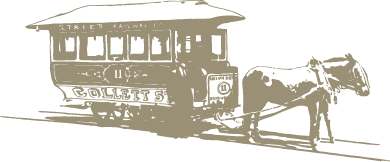Neighborhoods are Strengthening Central City
The Dallas Morning News, August 13, 1995
Dallas realtor Douglas Newby says that Dallas’ development resembles rings of a tree. Except the mid-level rings are creating interior growth. That theory counters traditional thinking that revitalizing the innermost business cores it the best way to stimulate growth outward.
Mr. Newby’s point starts this way: Old East Dallas neighborhoods like Munger Place, Swiss Avenue and Junius Heights started rejuvenating in the 1970s. “Urban pioneering” allowed young people to match their social conscience with cheaper, older homes. Old East Dallas’ abundant stock was available, and the rest is history. Restored “prairie” style homes are now everywhere in those neighborhoods, with spacious front porches, neoclassical columns and historic exteriors. The rambling homes are to Dallas what those Victorian “painted lady” houses are to San Francisco: part of the city’s signature. What’s notable comes next.
As Old East Dallas neighborhoods were rejuvenated, they enabled growth to occur closer to the central city core. Most notable was Deep Ellum. As the near-downtown area took off in the 1980s, drawing followers from Old East Dallas and elsewhere, Deep Ellum became an eclectic mix of music scene, cafes and loft housing.
Development started simultaneously in Bryan Place, whose boundary abuts the Central Business District. Mr. Newby says developers were buoyed by Old East Dallas growth, and dared to invest in new residences. Bryan Place now provides a professional’s dream: a short walk or commute to town. And, City Manager John Ware reports there are encouraging signs that loft housing is expanding in the Exposition Plaza area near Fair Park, which will provide a needed living link between downtown and the historic Art Deco park.
The point: social theorists may have it wrong. Traditionally, urbanists think about building a big downtown, and letting the growth ripple outward. Under that theory, older neighborhoods outside the city’s direct core represent the last rung of growth. Neighborhoods are even pawns in the developer’s game. Dallas’ experience counters that argument. Healthy mid-city neighborhoods spawn growth, too.
Another example is McKinney Avenue’s development. As neighborhoods like State-Thomas revitalized there, housing and retail spots began rippling back towards downtown. Now, a textured Uptown living area exists just blocks from downtown. The New York Times recently noted the urban neighborhood’s success. Dallas’ experience shows that more than high-rise buildings can create an urban center. Neighborhoods also strengthen a city’s core. Theories sometimes need to be stood on their head.

